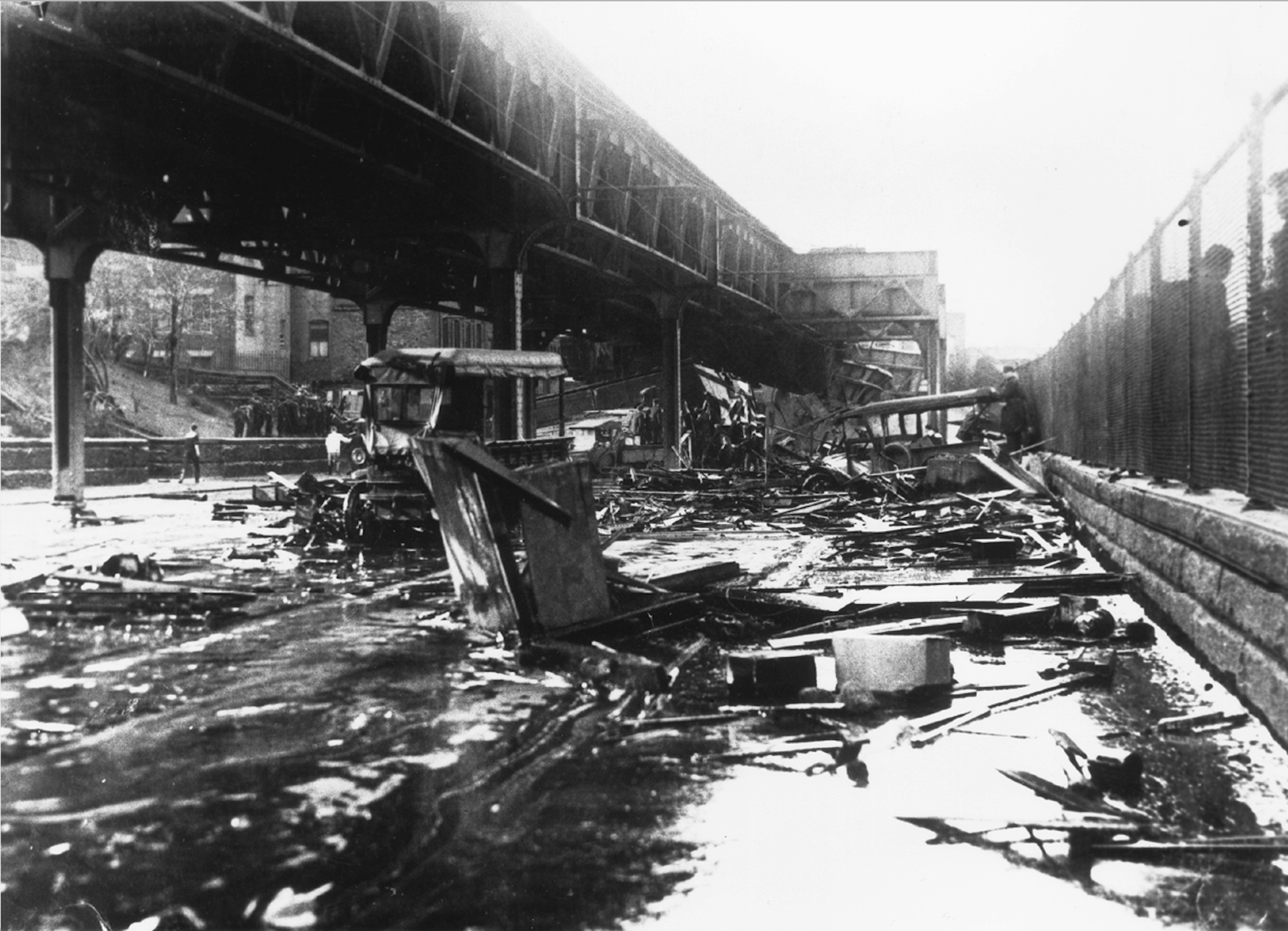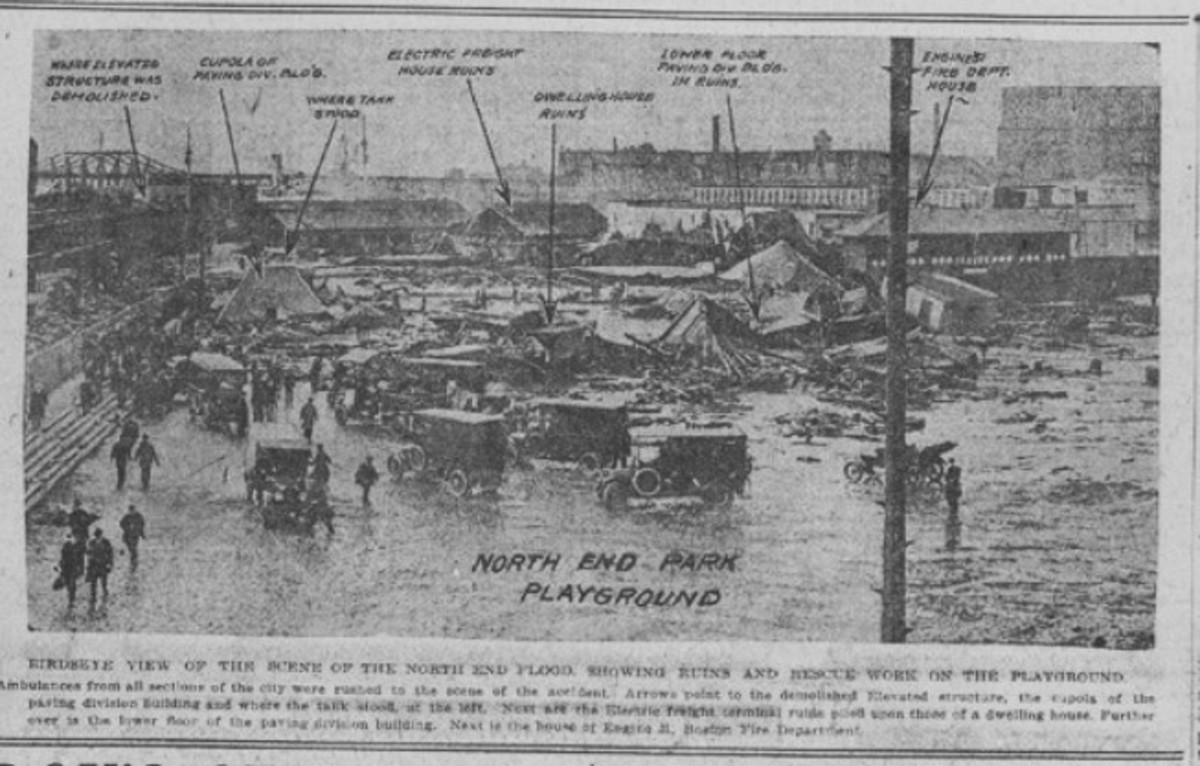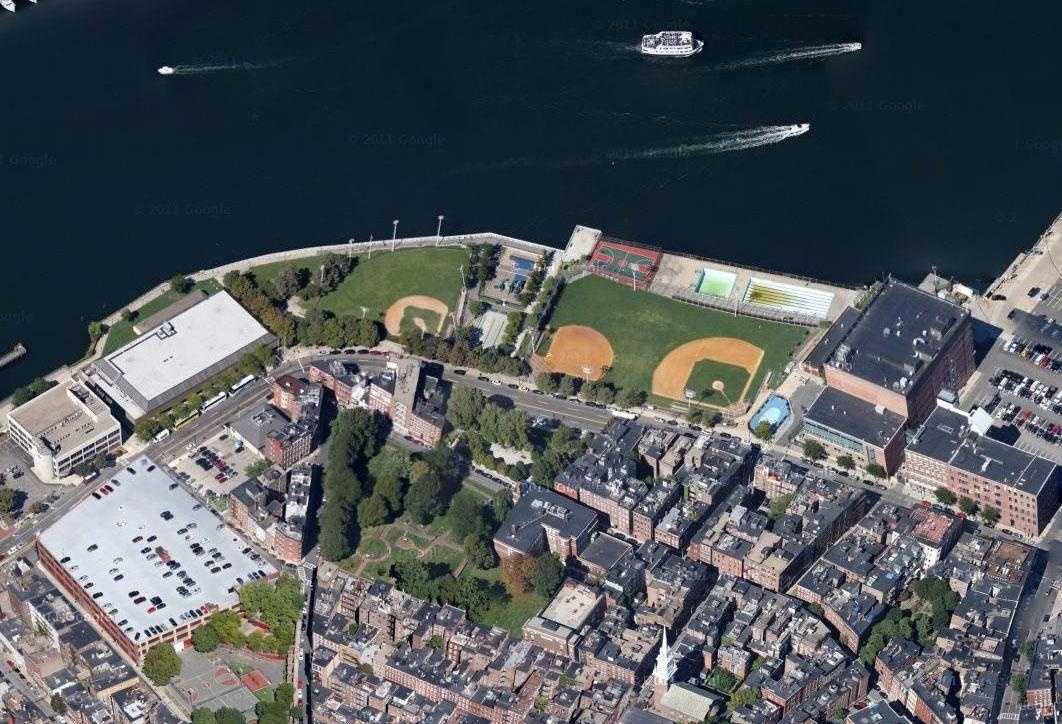

A considerable amount of molasses had been stored there by the company, which used the harborside Commercial Street tank to offload molasses from ships and store it for later transfer by pipeline to the Purity ethanol plant situated between Willow Street and Evereteze Way in Cambridge, Massachusetts. : 11 The disaster occurred at the Purity Distilling Company facility at 529 Commercial Street near Keany Square. Molasses can be fermented to produce ethanol, the active ingredient in alcoholic beverages and a key component in munitions. The event entered local folklore and residents claimed for decades afterwards that the area still smelled of molasses on hot summer days.

gallons (8,700 cubic meters) of molasses, weighing approximately 13,000 short tons (12,000 metric tons), burst, and the resultant wave of molasses rushed through the streets at an estimated 35 miles per hour (56 kilometers per hour), killing 21 people and injuring 150. The Great Molasses Flood, also known as the Boston Molasses Disaster, was a disaster that occurred on January 15, 1919, in the North End neighborhood of Boston, Massachusetts.Ī large storage tank filled with 2.3 million U.S. Mapping the physics of the molasses flood could help experts better understand other catastrophes such as industrial spills or ruptured levees, Sharp said.īut mostly, she and the others hope it will pique students' interest in physics. Once the tank split and the molasses gushed across the Boston waterfront, it cooled rapidly, "complicating attempts to rescue victims," the team said in its report. Two days before the disaster, the tank had been topped off with a fresh shipment of molasses from the balmy Caribbean that hadn't yet cooled to Boston winter temperatures. The team found that molasses thickens dramatically when exposed to cold, and that at the time of the collapse, the stuff in the storage tank likely was considerably warmer than the wintry air outside. Harvard graduate student Jordan Kennedy analyzed the properties of blackstrap molasses and how it flows at different temperatures. Researchers also studied century-old maps and archived National Weather Service meteorological data. Sharp's team combed through hundreds of pages of historical accounts. It reduced buildings to rubble and damaged an elevated train. It took only moments for the molasses to engulf the area around Commercial Street, a bustling artery. Outrunning it was out of the question: Sharp says the sticky tsunami raced through the cobblestone streets at 35 miles per hour, propelled by the sheer weight of the goop. 15, 1919, shortly after 12:40 p.m., the massive tank in Boston's crowded North End buckled and gave way, releasing more than 2.3 million gallons of molasses in a towering wave that historical accounts indicate was initially 25 feet tall-nearly as high as a football goalpost. "Oddly enough, that's exactly what we're dealing with here, except that this molasses wasn't slow." "I'm originally from Arkansas, where we have an old expression: 'Slow as molasses in January,'" she said.


Team leader Nicole Sharp said she hopes the findings-presented last week at a conference of the American Physical Society-will shed new light "on the physics of a fascinating and surreal historical event."
#BOSTON MOLASSES FLOOD CONVERSW FREE#
Now Harvard University researchers think they know why the wave of sticky stuff claimed so many lives: A winter chill rapidly cooled the molasses as it streamed through the streets, complicating rescuers' frantic efforts to free victims.Ī team of experts who studied the disaster to gain a better understanding of fluid dynamics concluded that cold temperatures quickly thickened the syrupy mess, which might have claimed few if any lives had it occurred in spring, summer or fall.


 0 kommentar(er)
0 kommentar(er)
